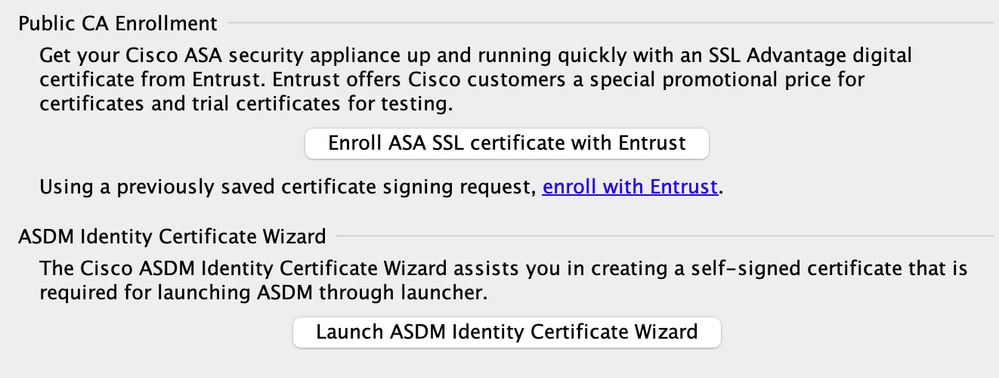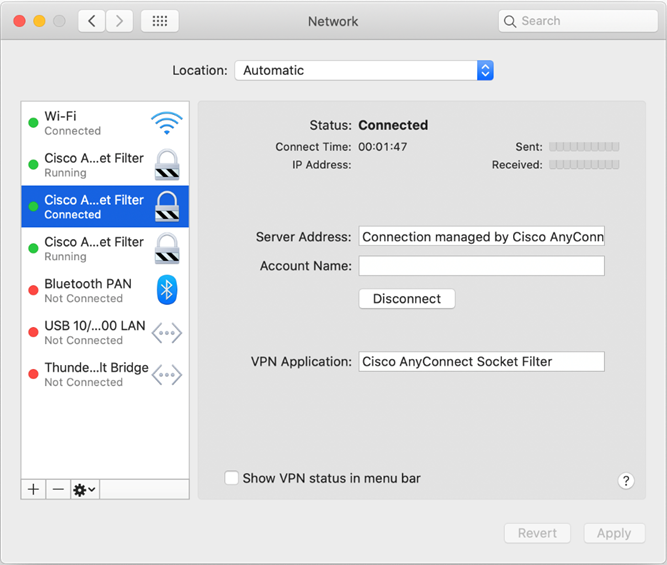
- #INSTALLING CISCO ANYCONNECT ON MAC FROM THE CISCO ASA HOW TO#
- #INSTALLING CISCO ANYCONNECT ON MAC FROM THE CISCO ASA FOR MAC#
- #INSTALLING CISCO ANYCONNECT ON MAC FROM THE CISCO ASA INSTALL#
- #INSTALLING CISCO ANYCONNECT ON MAC FROM THE CISCO ASA PASSWORD#
- #INSTALLING CISCO ANYCONNECT ON MAC FROM THE CISCO ASA DOWNLOAD#
All non-Stanford traffic proceeds to its destination directly. This routes and encrypts all traffic going to Stanford sites and systems through the Stanford network as if you were on campus. When using Stanford's VPN from home, we generally recommend using the Default Stanford split-tunnel VPN.
#INSTALLING CISCO ANYCONNECT ON MAC FROM THE CISCO ASA INSTALL#
To connect to the VPN from your Mac you need to install the Cisco An圜onnect VPN client. Stanford's VPN allows you to connect to Stanford's network as if you were on campus, making access to restricted services possible.
#INSTALLING CISCO ANYCONNECT ON MAC FROM THE CISCO ASA FOR MAC#
The built-in VPN client for Mac is another option but is more likely to suffer from disconnects.
#INSTALLING CISCO ANYCONNECT ON MAC FROM THE CISCO ASA PASSWORD#
with LDAP, you can essentially enforce your company password policy to remote users and one less password management as the users will you the company directory password.Cisco An圜onnect is the recommended VPN client for Mac.
#INSTALLING CISCO ANYCONNECT ON MAC FROM THE CISCO ASA HOW TO#
I will explain how to set up LDAP authentication in the next post. That’s it 🙂 In this post I used a local user to do remote access. the computer successfully has got IP address 10.200.1.51 and can ping the internal server 10.30.1.15. Here is a remote computer after logging into An圜onnect.
#INSTALLING CISCO ANYCONNECT ON MAC FROM THE CISCO ASA DOWNLOAD#
You can now download An圜onnect from the menu.

Let’s go back to the login page and login to the ASA with the newly created user and password. Please do not use such a bad password in the prod.ĪSA01(config)# username tayam password 12345ĪSA01(config-username)# service-type remote-access I am using a very bad password here for a simplicity. These objects will be used for NAT statement later.ĪSA01(config)# subnet 10.30.1.0 255.255.255.0ĪSA01(config-network-object)# subnet 10.200.1.0 255.255.255.0ĪSA01(config)# nat (inside,outside) source static INSIDE INSIDE destination static ANYCONNECT ANYCONNECT no-proxy-arp route-lookupĪt this point we are ready to create some remote user accounts. one is for the internal network and the other one is for the remote network. Now we need to configure NAT exemption to tell the ASA not to NAT the traffic between a remote client and internal network. it is used to define specific connection parameters that we want remote users to use.ĪSA01(config)# tunnel-group ANYCONNECT type remote-accessĪSA01(config)# tunnel-group ANYCONNECT general-attributesĪSA01(config-tunnel-general)# address-pool ANYCONNECTPOOLĪSA01(config-tunnel-general)# tunnel-group ANYCONNECT webvpn-attributesĪSA01(config-tunnel-webvpn)# group-alias ANYCONNECT_USERS enableĪSA01(config-webvpn)# tunnel-group-list enable Connection profiles are linked or associated with incoming request. You can also configure ACL bypass by adding the following sysopt command.ĪSA01(config)# sysopt connection permit-vpnĬreate a connection profile or also known as tunnel group. A group policy is a set of parameters for VPN connections.ĪSA01(config)# group-policy ANYCONNECT internalĪSA01(config)# group-policy ANYCONNECT attributesĪSA01(config-group-policy)# vpn-tunnel-protocol svcĪSA01(config-group-policy)# default-domain value ĪSA01(config-group-policy)# address-pools value ANYCONNECTPOOL these IP addresses will be assigned when users login An圜onnect.ĪSA01(config)# ip local pool ANYCONNECTPOOL 10.200.1.51-10.200.1.100 mask 255.255.255.0 However there is no VPN user account set up yet so you will not be able to login.Īlright let’s create an address pool for VPN users. For now click Continue to open the login page. I will explain identity certificate set up in another post. You will see this certificate error as this ASA does not have a valid identity certificate on it. Let’s open a web browser and check whether you can reach the ASA outside interface. Identify the An圜onnect package on the flash and enable An圜onnect.ĪSA01(config-webvpn)# anyconnect image flash:/anyconnect-win-6-webdeploy-k9.pkgĮnable An圜onnect access from outside network.Īt this point you should be able to access the ASA’s outside interface from the internet.

You can use tftp server to transfer the package onto the ASA.ĪSA01(config)# copy tftp:10.30.1.51 flash: 10.30.1.51 is the clientPC1 in the diagram Basic internet connectivity has been established.įirst of all, you will need An圜onnect package in the flash memory of the ASA. Here is the diagram that I am going to use through out this post. I always use GNS3 when a network project comes up. GNS3 is a very neat virtualization tool that allows you to test configuration before implementing it in Prod. Recently I have set up An圜onnect VPN with LDAP and Certificate-based authentication for my project and thought it would be helpful for other engineers to write this article to explain how to set all up.Īs always I am going to use GNS3 and a few Windows VMs for this article.


 0 kommentar(er)
0 kommentar(er)
